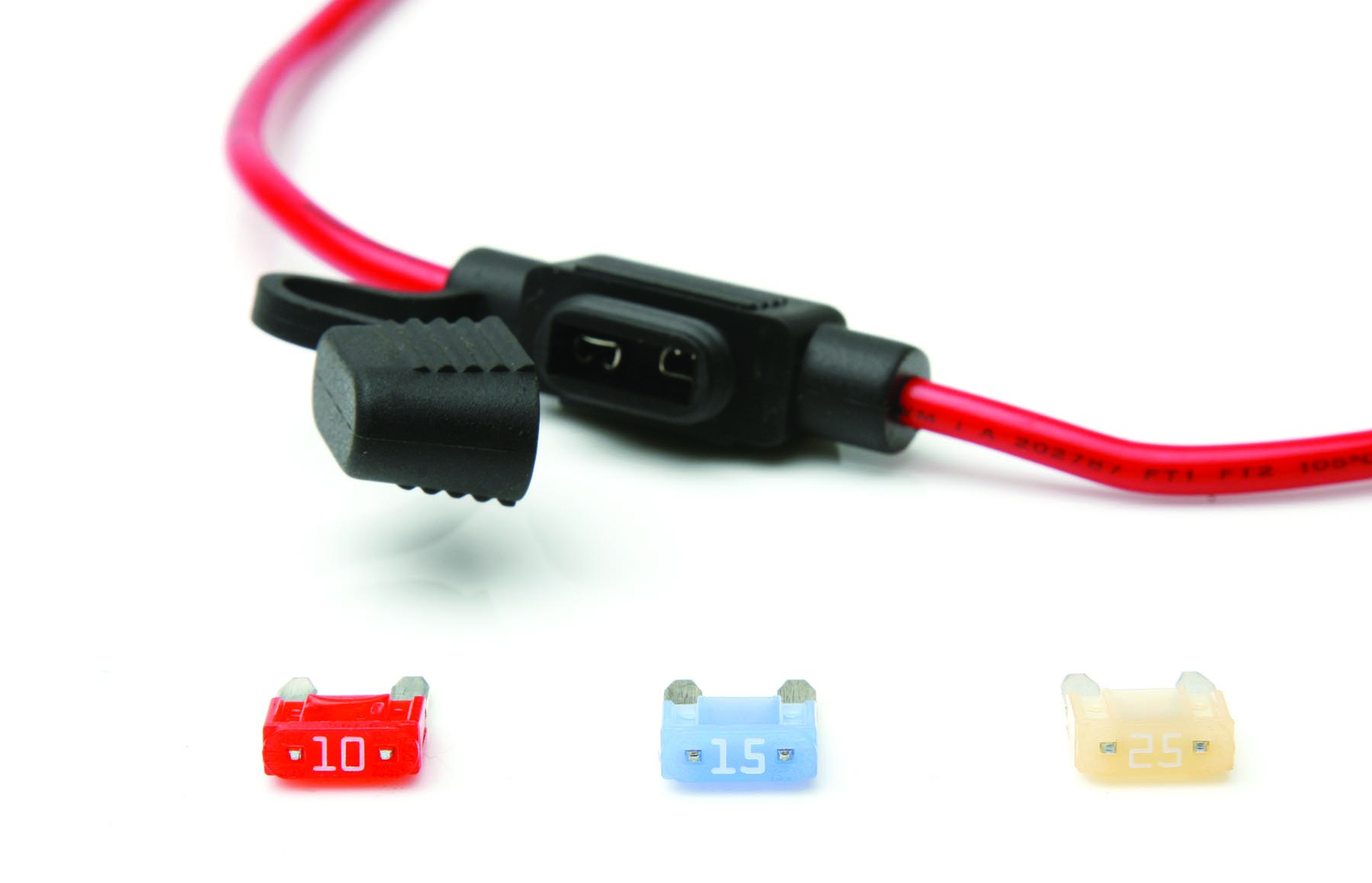Last time we talked about the amazingly simple wiring scheme used on British cars. Armed with this valuable knowledge, we can now put it to practical use. “Oh yeah, like what?” you might ask. How about bleeding the smoke from the system? What?
Alright then, it’s settled!
The device used for allowing excess smoke to escape harmlessly from the wiring is known as a fuse. On LBCs from the 1950s, there are usually only two fuses. A fuse block with green and purple wires fused to white and brown wires is quite common. As we know from last month, the white wire is from the ignition switch and the fuse protects devices fed by the green wires, such as wipers, gauges, heater fan, and brake lights. The brown wire is direct from the battery, and the corresponding fuse is for the horns, which are fed by the purple wire.
The ignition system, head lights, electric fuel pump, dash lights, overdrive, and just about anything else not already mentioned are not protected by a fuse and therefore in danger of losing smoke from a short circuit. A short circuit, of course, allows excess smoke to form and escape the wiring. The heat generated can irreparably damage the wires! For more technical information on this fascinating subject, check this out.
In order to avoid this nasty situation, more fuses can be added to the wiring. The simple solution is to insert heavy duty in-line fuse holders. These can be installed under the dash to preserve originality. New Lucas fuse blocks with four positions (as used on a Triumph TR6) can be purchased to replace the two position blocks. Wires are stacked at the block with one feeding the others and can be separated in order to fuse them individually.
Old blocks are difficult to clean up, and are economical to replace. Later blocks use push on connections for reliability and make a nice upgrade. Later two-position blocks (as used on an XKE) can be purchased new to upgrade the early blocks with screw connections. Likewise, a later voltage regulator (as used on a Triumph TR4) has the more modern connections, is otherwise identical, and is a nice improvement.
The Lucas fuses supplied from the factory are marked with very high ratings which do not correspond to the wiring requirements of the car when using modern AGC replacement fuses. Very few fused components will pull over 10 amps, and many will pull considerably less. Consequently, this writer recommends using a 15 amp fuse in each fuse block position. Fuses added to individual circuits can be even less. Adding a fuse on the white ignition wire from the switch is a common safety measure, but don’t forget that it feeds the original fuse block, and therefore the new fuse should be as large as, or slightly larger than the fuse feeding the green wires.
If in doubt as to the normal draw of any circuit, a battery charger with a built in amp meter can be used to feed the device in question. Just disconnect the wire that feeds the device and attach it to the proper lead from the charger. Ground the other charger lead to the chassis. This arrangement is also useful in finding electrical faults. Instead of repeatedly blowing fuses, the charger can be used to momentarily power the offending circuit. A high reading on the amp meter will show that the circuit is drawing too much current. Look for melted wiring near an electrical fault. For instance, one common problem is the red running light wire shorted to the body where it comes through a panel.
The charger can be used to remedy the opposite type of problem. If an electrical device is not working, try powering it with the charger at various points. The Lucas bullet connectors can be pulled apart at these locations to gain access. The connectors are often at fault, anyway. They can corrode or split inside the rubber cover and will have to be replaced. Keep a supply of new single and double connectors on hand. Always use a little dielectric grease when reassembling the connectors. Channel-lock pliers can be used to seat the bullets securely. Or, better yet, Moss has a Wiring Harness Repair kit (161-751). In a pinch, wire nuts make an excellent connection, too!
By Mike McPhail
Gulf Coast Austin-Healey Club
Hill Country Triumph Club










'Pint Size Project — Fuses' has 1 comment
October 5, 2012 @ 9:01 am goodsetter
Using a battery charger to test circuit resistance is an interesting idea. I’d be very careful powering a circuit to locate a short, I’ve seen harnesses melt their entire length almost instantly. It’s like the joke we use when someone is having difficulty finding a short, “Put a penny in place of the fuse and look for smoke.” I use a circuit breaker in place of the fuse, it will turn on and off and allow you to check for power throughout the circuit. I use a commercially available one that comes with a small meter which is basically a compass. Whenever a wire has current flow it creates a magnetic field which causes the meter to jump when the circuit is powered. You follow the harness with the meter until it stops jumping and you’ve found where the short is, there will be no current flow (or very little) past the short. It’s not always that simple, sometimes the short and resulting draw can be strong enough to cause your meter to jump even getting close to the car! Sometimes when looking for a short in a large circuit such as lighting you can install the circuit breaker and watch the lights. The lights will come on momentarily when the circuit breaker closes, the ones past the short won’t—then you can narrow your search to that portion of the harness.